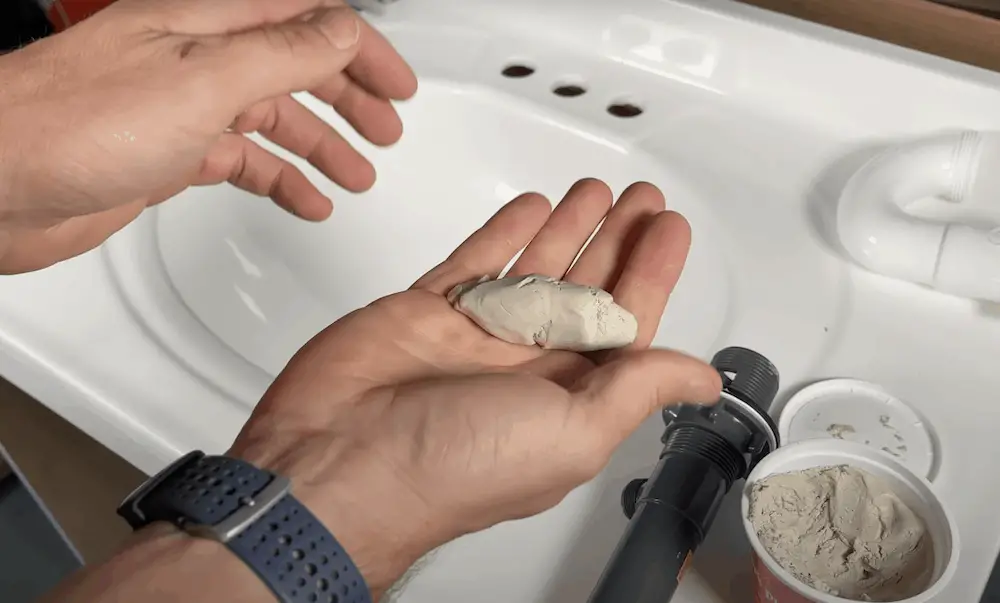When it comes to plumbing – and all the inevitable issues that come up with faucets and drains – Plumber’s Putty is an important tool to have around. I love it because it’s cheap, easy to find (can be found at any home improvement store), long-lasting, and super effective when you know how to use it.
In this blog, you’ll learn how and when to use plumber’s putty – and when not to use it. Plus I’ll share my thoughts on how long you need to wait to let plumber’s putty dry before you can use your sink safely without worrying about leaks.
Tools:
DISCLAIMER: This blog contains affiliate links, which means that if you click on one of the product links, I’ll receive a small commission.
Rather watch instead of read? Check out this 6-minute video below! 👇
First, What’s Plumber’s Putty?
Plumber’s putty is a “play-doh” like material that’s water-resistant, soft, and flexible. This makes it a perfect tool when you need to make a water-tight seal. Unlike caulk, it’s not super sticky, which makes it easier to apply and remove.
Plumber’s Putty – The Purpose and Practical Usage Options:
- It can be used as a water-tight seal on drains, tubs, kitchen sinks, and other sink fixtures.
- I also like to use it underneath the lip of a kitchen sink if I’m installing it into a hole and laminate countertop.
When NOT To Use Plumber’s Putty:
- It’s not ideal for porous surfaces like granite or marble, or other dimensional stones. It can stain and leave a yellow-ish mark. Not ideal!
- Plumber’s putty also doesn’t work as a substitute for Teflon tape or silicone caulk. While it can handle water, it can’t tolerate intense pressure. So it’s not good for some pipes or joints.
What’s the Drying Time for Plumber’s Putty?
A question I hear often is: when will plumber’s putty dry and how long do I have to wait to use my sink? Well, it’s not going to dry – at least not any time in the next decade or so!
In other words, there is no dry time. So in my opinion, as soon as you install your plumber’s putty and have a good seal – you’re good to go. Feel free to let me know if you think differently in the comments below!
How to Use Plumber’s Putty – Installing a Drain into a Vanity Top:
Here’s a quick demo of how I used plumber’s putty when installing a drain into a vanity top.
1. Clean surfaces & take off the flange
Plumber’s putty will sit between the drain flange and the surface on your vanity top. So make sure everything is clean before you apply the putty.
2. Be sure your putty is room temperature or warm
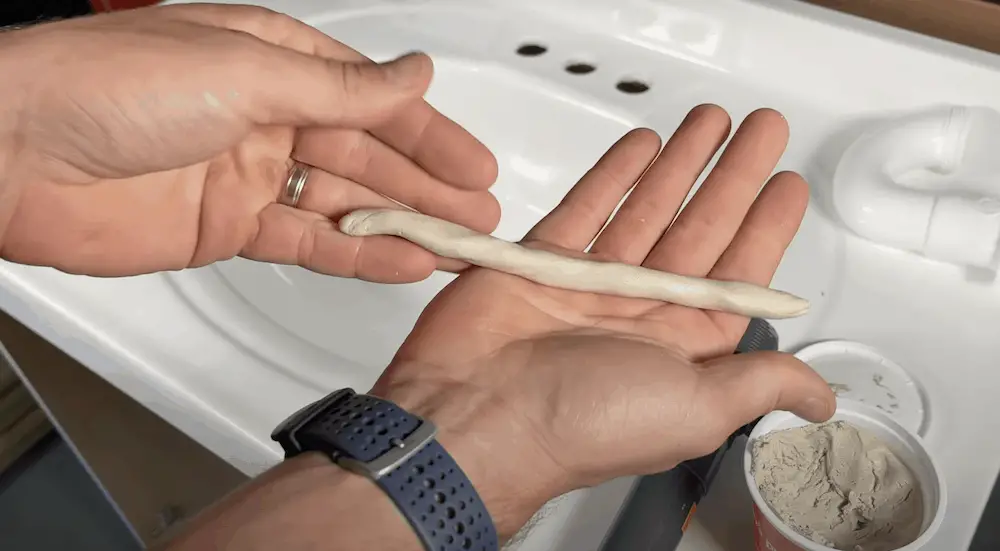
With your room temperature putty, you’ll want to pull off a nice chunk and roll it out into a “snake.” Does it break apart or start to crack when you roll it? That likely means it’s too old and you need a new jar.
3. Apply the putty to the flange
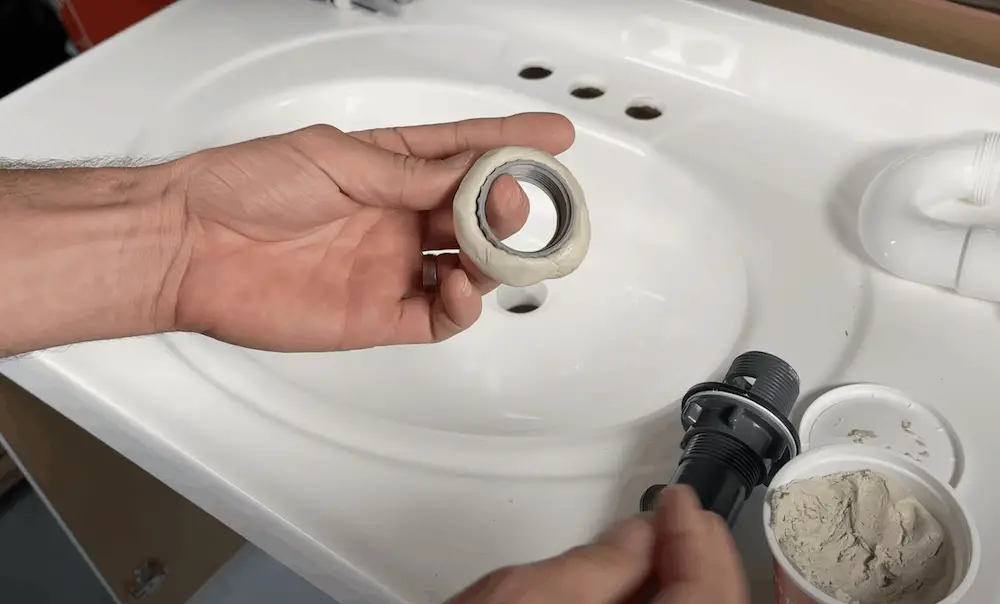
Apply a generous bead of putty to the flange. Then, put the excess putty back in your container. From there, you’ll press the putty onto the vanity top. Squish it around the flange – but don’t press too hard.
Note: I know some people don’t like the idea of putting used putty back into the container, but since the surface is clean – I’m ok with re-using it to save a little money and waste.
4. Go under your vanity
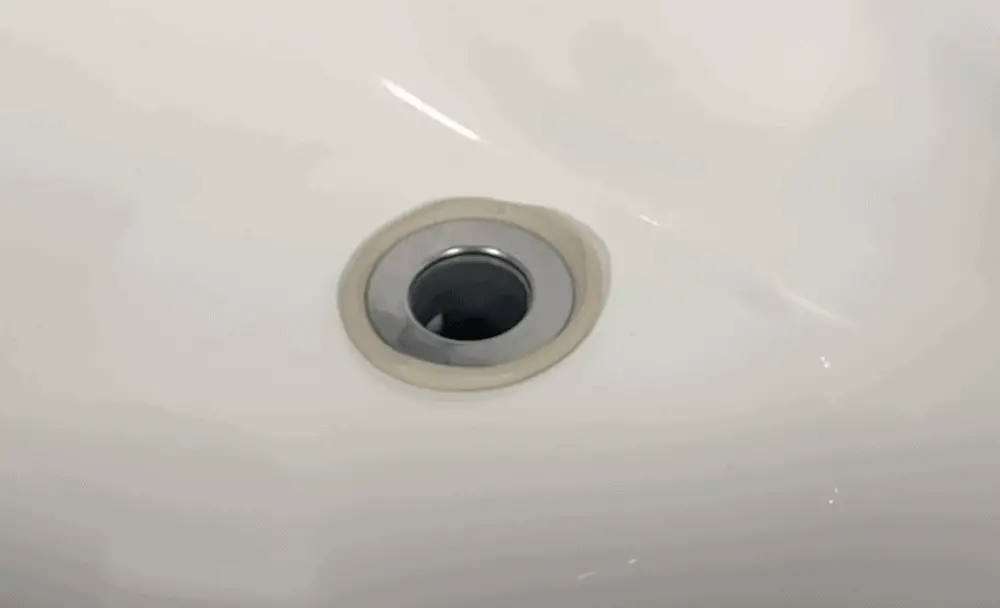
From under the vanity – take the top threaded part of the drain tailpiece, making sure the jamb nut is fully backed out. Start to rotate the tailpiece into the flange. Once it’s threaded in, that’s where you’ll start to tighten the jamb nut which will compress the rubber gasket into the bottom of the vanity while also pulling down the drain flange.
As you continue to tighten the nut – the putty will continue to push out around the flange. Be sure to install the p-trap, the pivot rod, and the drain stopper, so the last part of the drain install is to finish tightening the jamb nut resulting in a complete seal of plumbers putty all around the drain flange.
5. Peel off extra putty
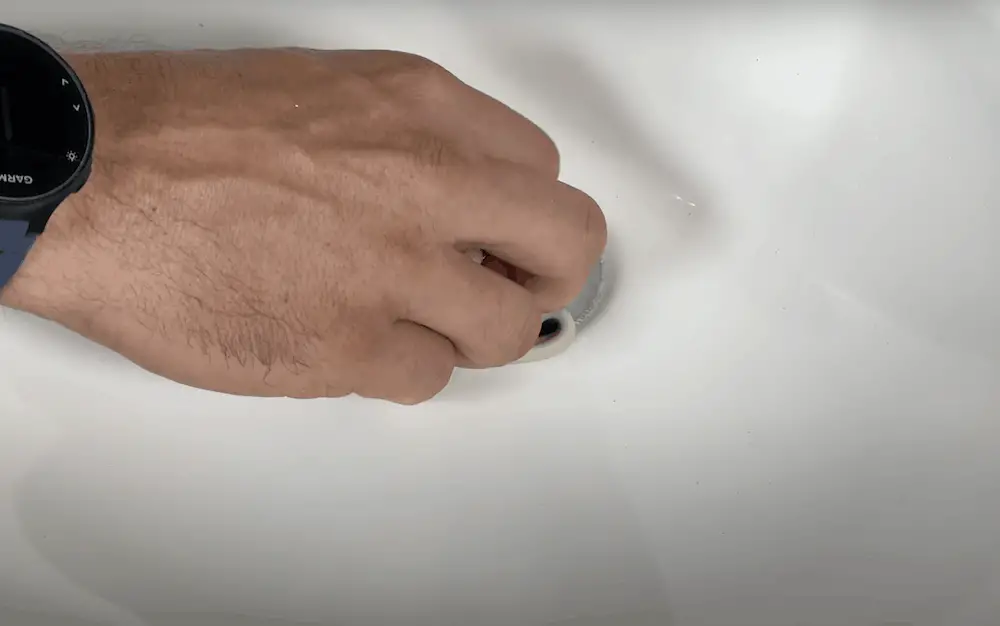
With everything in place and the final tightening done, now you’ll remove the extra putty.
More Plumber’s Putty Tips
When you’re buying putty at the store, check to make sure the jar isn’t super hard or that the lid doesn’t have any cracks. It could be a sign that it’s already dried out.
If you are like me and keep a tub of plumber’s putty in your truck at all times remember to sit the tub by a heater vent or on top of a radiator to warm up the putty prior to use. This is especially important during our Illinois winters.
The Wrap Up
As you can tell, plumber’s putty is a super useful tool that’s easily accessible and simple to use. However, it’s important to use it as it’s intended and not substitute it for caulks, tapes, or other stronger seals that are designed to withstand more pressure.
